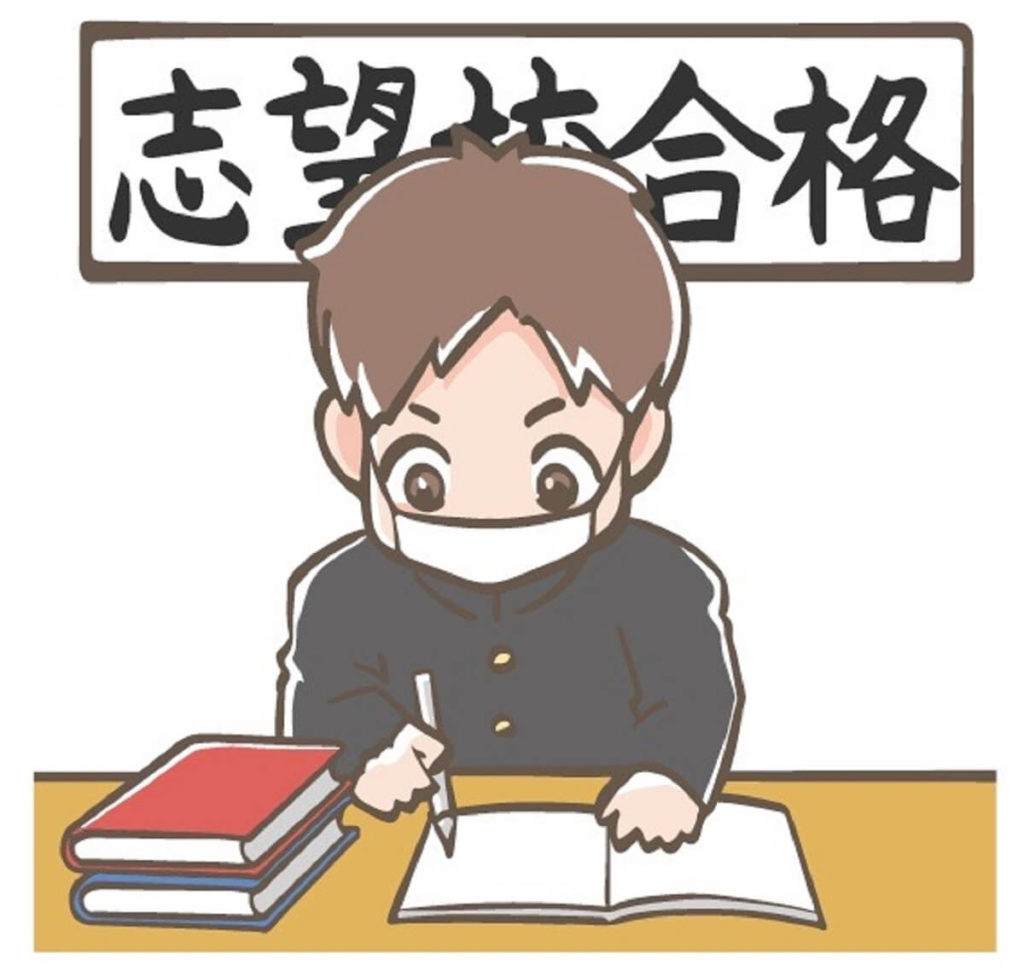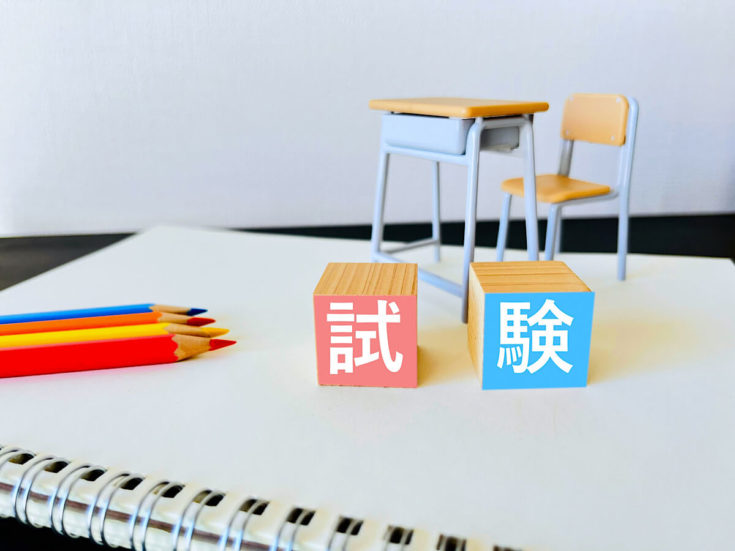In Japan, the university enrollment rate exceeds 56.6%. This means that one out of every two individuals attends a university, so universities are familiar to Japanese. However, the process of “entrance exams” for university admission is an extremely challenging ordeal. In Japan, it’s not uncommon for people to say, “It’s more difficult to get into a university than to actually attend one.” While in Western countries, admissions are often determined by high school academic performance and extracurricular achievements, known as admission on recommendation, this approach is relatively rare in Japan.
Therefore, in this article, I’d like to describe four topics related to the highly competitive entrance exams for private universities, which have the highest application rates. The reason for focusing on private universities is that most examinees to national and public universities also apply for private university exams, so it is a common format in Japan.
1. The common thinking about examinations in Japan
Like other developed countries, Japan has a deep-seated culture of valuing educational background. This means that the belief in the advantage of attending leading universities for better employment prospects is widespread. As a result, parents aspire for their children to attend leading universities whenever possible. Consequently, it’s common for high school students to attend an exam preparation school known as a “juku” from their first grade of high school. Additionally, high schools also aim to produce students who can get admission to higher-level universities and actively work to build the pass records.
In high schools with a high rate of students advancing to university, it’s common to conduct tests which are similar to university entrance exams starting from the first year. Then, as the intensive university entrance exam preparation period begins in the winter of the second year of high school, high schools often hold frequent meetings related to the exams. This way, Japanese high school students tend to lead a life consciously focused on university entrance exams after entering high school, knowing that their performance can significantly determine their future.
2. Subjects of the examination

In general, for private universities, it is typically necessary to take exams in three subjects.
For humanities majors, these subjects include Japanese language (which includes modern Japanese, classical Japanese, and Chinese classics), English, and social studies (choosing one from Japanese history, world history, geography, ethics or political economics).
On the other hand, for science majors, they are required to take exams in mathematics, English, and a science subject (choosing one from physics, chemistry, biology, or geology).
Commonly, for humanities majors, the chosen subject in the social studies category is often Japanese history or world history because these two subjects are used for humanities entrance exams at most private universities. Other social studies subjects may not be applicable to the entrance exams at certain universities or faculties.
In the case of science majors, physics, chemistry, and biology are typically the primary subjects chosen. Geology is often not used for entrance exams at many private universities and is more commonly used for entrance exams at national and public universities.
For specialized faculties like medical schools, it is usually the case that even private universities impose more subject requirements than three subjects.
3. The cost of entrance exams
Taking an entrance examination is an event that also involves a significant amount of money. Firstly, more than half of the students aspiring to higher-class universities attend a juku. There are various forms of jukus like group classes with many students per teacher or one-on-one private tutoring. Depending on the type of juku and if a student attends for all three years of high school, the cost can range from 500,000 yen to over 1,000,000 yen (3,500 to 6,700 dollars in USD).
Furthermore, relying solely on textbooks provided by schools or cram schools may not be sufficient to prepare for the tests required by universities. Therefore, some examinees choose to purchase reference books that provide more in-depth summaries of the textbooks distributed at school or specialized vocabulary books for exam preparation, including English vocabulary and classical Japanese literature vocabulary. These study materials can cost from 1,000 to 2,000 yen (7 to 14 dollars) per book, and students may need to purchase several books for subjects they are not good at. Finally, as for examination fees for universities, it typically amounts to an average of 35,000 yen (235 dollars) per department in a private university.
And it is said that examinees apply to 3-9 universities on average. In this way, it is obvious that entrance examinations are definitely the most expensive event in the lives of examinees who have come this far on their academic journey.
4. Regarding studying for exams

During the university entrance exam preparation period, it is generally said that the content of the entrance tests follows the high school curriculum. However, in the author’s opinion, university entrance exams can be more difficult if they rely solely on what they’ve learned in high school. In entrance exams, they will be tested on the entire scope of knowledge acquired over their three years in high school. In other words, if they stick to the high school curriculum, they won’t have time to catch up on the material covered in the latter part of the third year. Therefore, it’s crucial to start preparing for exams between January and February of their second year, finish covering all the material they’ll learn in high school by the summer of their third year, and allocate their time to solving problems.
It is common for examinees attending cram schools who want to enter a higher-class university to go straight to the cram school after school and study until night, and to spend the whole day on weekends and holidays holed up in the cram school.
In general, memorization of vocabulary, terms, formulas, and other content is crucial for every subject. These all apply what they have memorized to the exams. Success requires continuous effort and preparation, as there is no substitute for consistent memorizing.
Around autumn, they will likely have studied what will be covered in the entrance exams at least once, and it becomes crucial to focus on solving past exam questions from the university they aspire to attend. Solving past questions not only helps them become familiar with the typical format of that university’s exams but also allows them to understand the trends in the areas the university tends to focus on in their questions. By aligning what they’ve studied with what the university they aspire to attend expects in their exams, they can tailor their preparation to match what their questions require, boost their confidence, and increase their chances of success.

In these ways, I hope I have been able to describe a little bit about the realities of the Japanese university entrance examinations. Examinees preparing for entrance examinations have to endure various pressures, such as their future, their parents’ expectations, and their financial situation. However, they should be able to have absolutely satisfactory results depending on their own efforts. This ordeal tells us that if they believe in themselves and make the effort to meet these expectations, they will be able to pave the way. I believe that it is the role of this examination.
I’m a university student majoring in English and British literature. I want to use English in various contexts and try hard to study it. Also, I have been into movies since I was in university and have been to a theater once a week for 3 years.





 HTJ has a YouTube page! Check it out
HTJ has a YouTube page! Check it out
Hi Yama-san! I’m a member of Hapa buddies, Akiko.
Your article is very easy to understand! People from other countries might be amazed when they read it!
I volunteer to teach Japanese, and since one of my students didn’t know the word “受験生”, I shared your article in my Facebook group. Thank you!